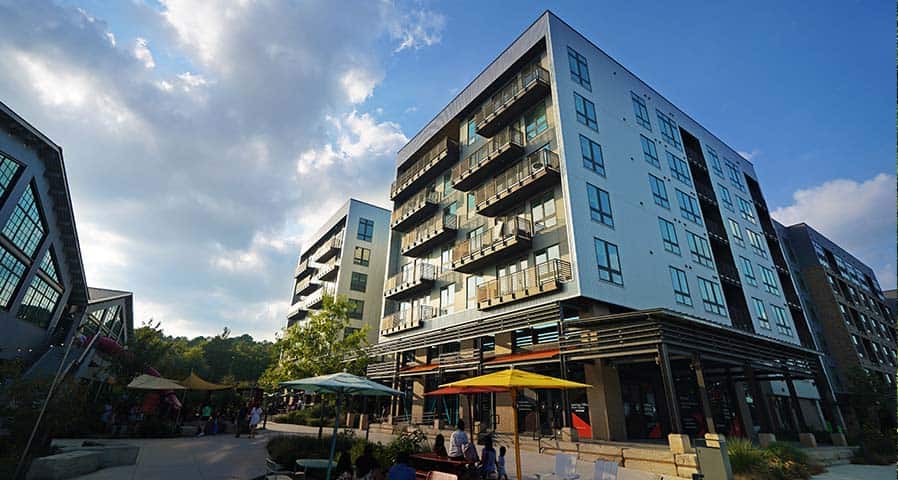As commercial buildings evolve to meet stricter energy standards and sustainability goals, facility managers are reevaluating their heating and cooling systems. One major consideration is whether to invest in Commercial Heat Pumps or stick with a Traditional HVAC setup.
Understanding Commercial Heat Pumps
Commercial heat pumps are versatile systems that provide both heating and cooling through a single unit. Unlike traditional heating systems that burn fuel to create warmth, heat pumps work by transferring heat. In cooling mode, they extract heat from indoor air and release it outdoors, functioning like an air conditioner. In heating mode, the process is reversed, drawing heat from the outside air, even when it’s cold, and bringing it inside.
This technology enables year-round temperature control while using less energy. Types of heat pumps commonly used in commercial buildings include:
- Air-source heat pumps – Efficient and relatively simple to install
- Ground-source (geothermal) heat pumps – Higher upfront costs but excellent efficiency
- Water-source heat pumps – Often used in larger commercial applications with central water loops
What is a Traditional Commercial HVAC System?
A traditional HVAC setup usually includes a furnace or boiler for heating and a separate air conditioning unit for cooling. Furnaces typically rely on combustion, such as burning natural gas, oil, or using electric resistance, to generate heat. The cooling side of the system works by removing heat from inside the building and expelling it outdoors, similar to the cooling function of a heat pump.
Efficiency in traditional systems is measured in different ways:
- AFUE (Annual Fuel Utilization Efficiency) for furnaces
- SEER (Seasonal Energy Efficiency Ratio) for air conditioners
Incentive Rebate360 has over 62 years of accumulated experience in commercial rebate recovery services. If your organization is considering an energy efficiency project, now is a good time to schedule a call and start maximizing your rebate recovery efforts.
Comparing Commercial Heat Pumps and Traditional HVAC
Energy Efficiency
Commercial heat pumps are among the most energy-efficient systems available today. Since they transfer heat rather than generate it, they can reduce electricity use by up to 50% compared to electric resistance systems. They also perform well with variable-speed compressors and smart building controls.
In contrast, even high-efficiency traditional HVAC systems often require more energy, especially when using fossil fuels for heating. While gas furnaces can reach 90%+ AFUE, they still burn fuel, which leads to higher overall energy consumption.
Installation and Cost
- Upfront Costs: Heat pumps often come with a higher installation cost. However, since they replace both a heating and cooling system, the combined investment can be comparable.
- Operating Costs: Over time, heat pumps generally have lower utility bills, especially in facilities that use renewable energy or off-peak electricity rates.
Traditional HVAC systems may cost less initially, particularly in buildings with existing infrastructure. However, operating expenses can be higher, and the need for two separate systems may complicate maintenance and space planning.
Climate Considerations
Modern commercial heat pumps, especially cold-climate models, are built to perform well even in low outdoor temperatures. However, in areas that experience extremely harsh winters, traditional HVAC systems with gas furnaces still offer a performance advantage.
Some commercial properties in cold regions opt for dual-fuel systems, combining the efficiency of a heat pump with the reliability of a furnace.
Longevity and Maintenance
Commercial heat pumps typically last 10–15 years. Because they’re used year-round, they may require more frequent service to maintain efficiency. Preventative maintenance, such as cleaning coils, checking refrigerants, and monitoring controls, is key.
Traditional HVAC systems tend to have a longer furnace lifespan (15–20 years) but require more components to be maintained separately, increasing long-term upkeep efforts.
Environmental Impact
Heat pumps win out on environmental performance. They produce no direct emissions and can be powered with renewable electricity. By contrast, gas and oil furnaces emit CO₂ and other greenhouse gases. Even with high-efficiency models, traditional systems leave a larger carbon footprint.
Which System is Best for Your Commercial Building?
Choosing between commercial heat pumps and traditional HVAC systems depends on your facility’s size, location, budget, and sustainability goals.
- If your building is in a moderate climate and you’re looking to lower energy bills and reduce emissions, a commercial heat pump is likely your best bet.
- If your building is in a cold climate and you need guaranteed heating performance during extreme weather, a traditional HVAC system may be more appropriate.
- If your goal is long-term ROI and improved ESG metrics, a heat pump system with smart controls could align better with those strategies.
Explore Your Rebate Options
No matter which system you choose, financial incentives can offset installation costs. Many utility companies and government programs offer commercial rebates for both Commercial Heat Pumps and Traditional HVAC systems.
At Incentive Rebate360, we specialize in helping commercial property owners and managers identify and apply for the highest-value rebates available. Contact us today for a personalized rebate analysis to see which system will deliver the most savings for your facility Call 480-653-8180, email [email protected], or scheduling a call that fits your needs by clicking the button below!






0 Comments